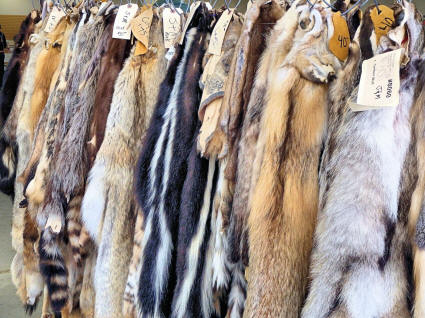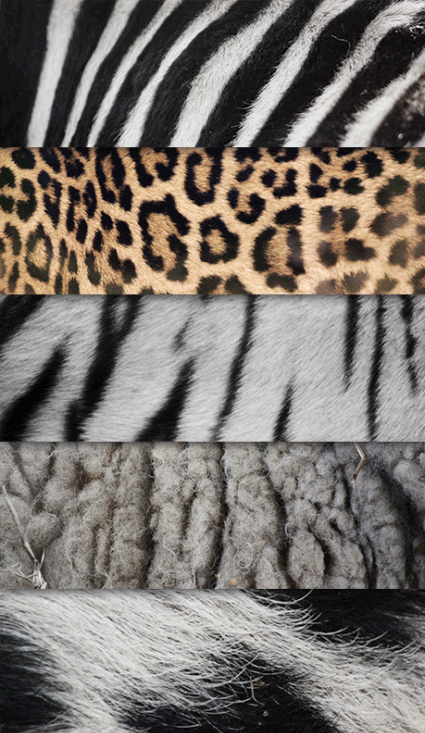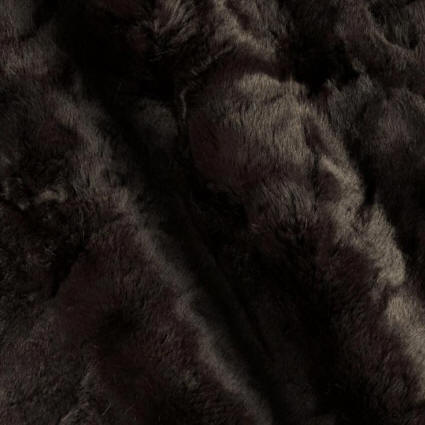What is Fur?
Real Fur Compared to Fake Fur

Fur is the thick growth of hair that covers the skin of many kinds of animals. People make coats and other warm clothing from fur. They value fur for its beauty as well as for the warmth it provides.
Fur consists of a combination of stiff, oily guard hair on top and thick underfur beneath. The guard hair sheds moisture, and the underfur acts as an insulating blanket that keeps the animal warm.
Because fur comes from wild animals, it cannot be flawless like cloth, which is manufactured from fibers. The work involved in repairing imperfect pelts and then sewing them together into clothing contributes to the high cost of fur garments. In some years, the scarcity of fur-bearing animals makes prices rise even higher.
Fur that comes from animals is called natural fur. Natural furs account for about 99 percent of the dollar value of fur garment sales in North America. Manufacturers also produce artificial fur, which looks like many kinds of fashionable natural furs but costs far less and is not as warm.
From the beginning of time people wore animal skins for warmth and protection. They also used skins for blankets, rugs, and wall hangings. During the 400's B.C., an active fur market operated in Athens, Greece. Fur became a luxury during medieval times, when only kings and princes wore such extremely expensive furs as ermine and sable.
The desire for furs stimulated much of the early exploration of North America. In the 1600's, fur trading became the most important industry in Canada.
Today, the fur industry plays an important role in the economies of many nations. More than half of the world's fur supply comes from fur ranches, where fur-bearing animals are raised in pens. The rest of the fur comes from trapping wild animals.
During the late 1970's to early 1980's, Russia produced more fur than any other nation. The United States ranked as the second largest producer, followed by Canada. The fur garments produced annually in the United States had a total wholesale value of about $400 million. The wholesale value of Canadian fur garment production exceeded $150 million annually. Both the United States and Canada exported millions of dollars Worth of fur pelts yearly. Major importers of fur include France, Great Britain, Greece, Italy, Japan, Switzerland, the United States and Germany.

The most popular natural furs used for clothing include beaver, fox, mink, muskrat, and raccoon. Chinchilla, mink, Persian lamb, and sable are among the most fashionable and most expensive furs.
Furs vary greatly in color, texture, and value. Colors range from jet-black to snow-white, with many shades of brown, blue, gray, red-orange, and tan. Fur texture varies from the velvety softness of beaver to the coarseness of raccoon. Some furs, including beaver, mink and nutria, are warmer and more durable than others. In the late 1970's, the price of a fur pelt in the United States ranged from 25 cents for a squirrel skin to $800 for a top quality lynx skin.
Rodents provide more skins for furs than any other group of animals. Beavers, muskrats, and other rodents make up more man three-fourths of the total wild fur catch in the United States and Canada. The weasel family supplies the greatest number of pelts from fur ranches. Weasels include such valuable fur-bearing animals as ermines, minks, and sables.

Consists of synthetic fibers that have been processed to look like real fur. Artificial furs become increasingly popular when the prices of genuine fur rise. The most popular "fake furs" are imitation lamb, mink, muskrat, and seal. Manufacturers make artificial furs by weaving and knitting synthetic fibers into pile fabrics. Pile consist of soft, clipped fiber ends, Manufacturers treat the pile to make it look like real fur. Natural fur fibers are sometimes woven into the pile to make it feel more like genuine fur.